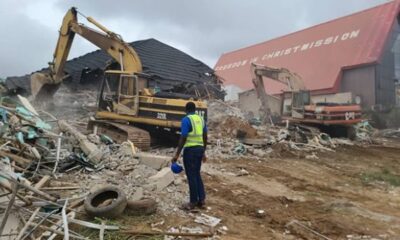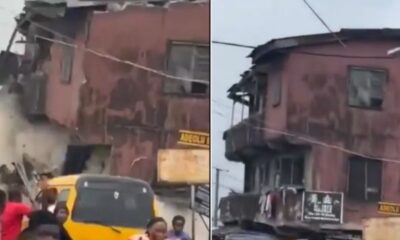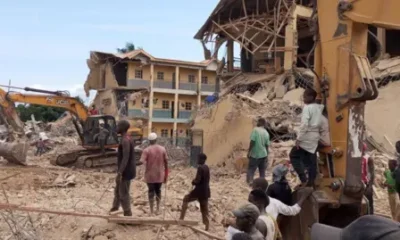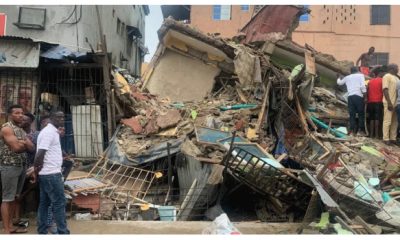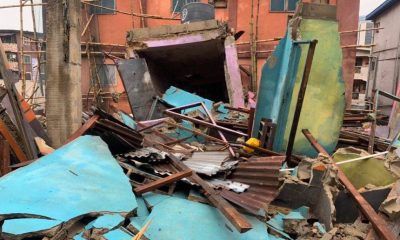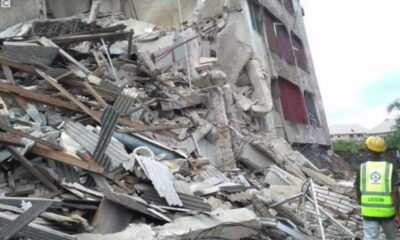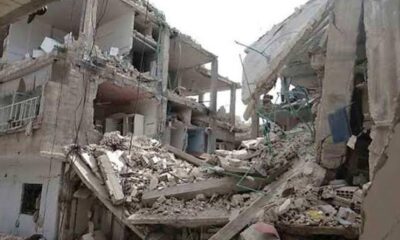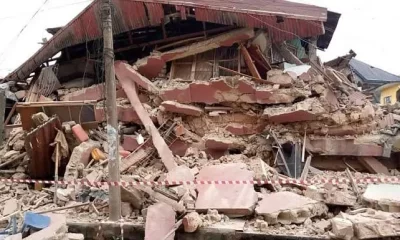NEWS
5 technologies to prevent building collapses

The Building Collapse Prevention Guild (BCPG) has called on the Lagos State Government to harness modern technology to monitor and prevent building collapses.
During an interview, Mr. Gbolahan Oyelakin, the BCPG Ikeja Cell Coordinator, emphasized that with advanced technological tools, Lagos can take preventive measures and identify structural risks in buildings before they escalate into dangerous issues.
Using Technology for Building Health and Structural Safety
Oyelakin highlighted that technology can play a crucial role in tracking the life cycle and performance of buildings across Lagos. Implementing these solutions allows government agencies to address emerging risks proactively rather than waiting for incidents.
Read Also:
Lagos to dialogue with developers, owners of distressed buildings
By tracking building materials and structural integrity, technology can predict when certain components are likely to fail, allowing for timely interventions to avert structural collapses.
The recent efforts of the Lagos State Building Control Agency (LASBCA), which demolished 15 unstable buildings in Iponri, were praised by Oyelakin as examples of proactive building safety management.
However, he asserted that more robust technological solutions are necessary to consistently monitor and maintain the safety of buildings citywide. Beyond technological monitoring, Oyelakin also advocated for effective data management and emphasized that stricter enforcement of insurance policies would encourage compliance among builders and property developers.
He expressed that “insurance policies are vital, but compliance is often neglected,” suggesting the need for enhanced regulatory enforcement.
Here are 5 technologies recommended for building monitoring and safety
1. Building Information Modeling (BIM)
BIM technology provides a digital model that can track every stage of a building’s life cycle. Through regular updates, BIM can predict possible structural weaknesses and allow authorities to act before significant damage occurs.
2. IoT Sensors for Structural Health Monitoring
IoT-enabled sensors placed within buildings can continuously measure stress, vibration, and material health. These real-time data updates are vital in assessing wear and tear, particularly in buildings exposed to harsh weather conditions.
3. Drone Inspections
Drones equipped with high-resolution cameras and thermal imaging can detect cracks, deformations, and other structural issues in hard-to-reach places, allowing for comprehensive assessments without putting human inspectors at risk.
4. AI and Machine Learning for Predictive Analysis
AI algorithms can analyze vast amounts of historical data to identify patterns linked to building failures. Machine learning can also forecast structural weaknesses, giving officials insights into areas needing reinforcement or repair.
5. Geographic Information System (GIS) Mapping
GIS can compile data related to ground stability, weather patterns, and soil quality. This can help urban planners and engineers identify risky locations before construction, improving long-term structural resilience.

